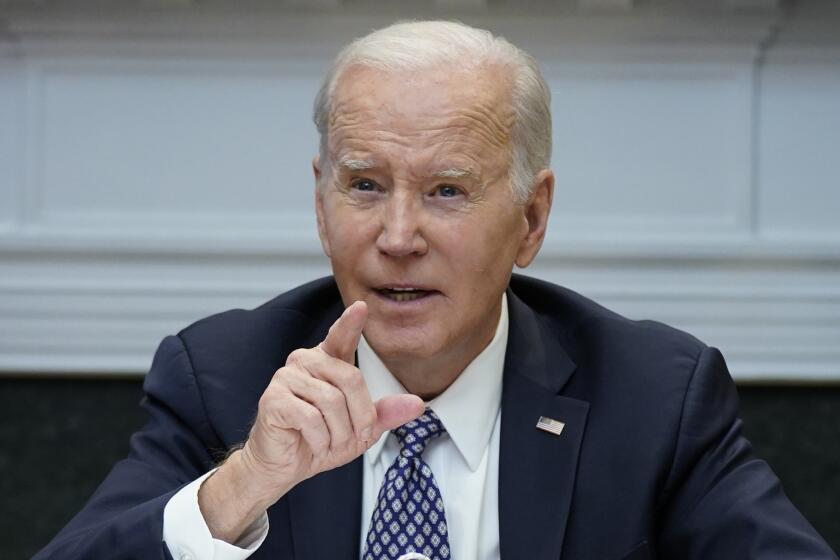Hot U.S. employment market shows signs of cooling

- Share via
The hot job market has been defying a weakening economy and confounding the Federal Reserve for months, but it now shows signs of cooling.
The latest set of employment data from the government shows that job openings fell in March to their lowest level since April 2021. Layoffs rose to 1.8 million, the most since December 2020.
Employers are also slowing the pace of hiring. The government lowered its hiring figures for February and March, although hiring remained strong in April. More broadly, job gains for February through April constituted the weakest three-month average since January 2021.
The persistently strong labor market has bewildered the Fed and economists for more than a year as higher interest rates meant to slow economic growth did little to loosen a historically tight job market with record-low unemployment. That resistance is now slowly fading, according to analysts.
“The labor market is usually the last to break in an economic downturn, and when it does, things can change quite rapidly,” David Kelly, chief global strategist at JPMorgan Funds, wrote in a note.
For President Biden, good jobs report raises hopes the U.S. economy can stick a soft landing — possibly avoiding a recession as the 2024 election nears.
Factors including tighter business conditions, weak sentiment and declining job openings probably will keep factoring into future labor data.
“The labor market can’t dodge a downturn indefinitely,” Kelly said.
The strong job market and higher wages for workers have defied the Fed’s efforts to cool inflation while also keeping a weakening economy from slipping into a recession. The Fed has raised interest rates 10 times since March 2022 but recently signaled that it may forgo another rate hike at its next meeting in June.
Wall Street expects the central bank to hold its current benchmark interest rate steady at a range of 5% to 5.25%.
The Fed’s goal when it began raising interest rates in 2022 was to achieve a so-called soft landing, in which it would slow economic growth enough to tame inflation while avoiding a recession. Earlier this month Fed Chair Jerome H. Powell said such an outcome could be achieved, pointing out that the unemployment rate has actually declined slightly since the Fed started raising rates, even as inflation declined. If such a pattern held, a downturn could be avoided, Powell said.
With hiring slowing, applicants need to be more strategic. Coming armed with the right questions to suss out whether the role is a dream job — or a nightmare waiting to happen.
However, most economists expect the U.S. to slip into a recession this year, though estimates of its potential severity differ.
Wall Street is closely watching how companies react to the economic slowdown. Analysts expect many of the layoffs announced over the last few months by companies such as Google and Facebook parent Meta to have a lagging effect on broader employment data this year.
More to Read
Inside the business of entertainment
The Wide Shot brings you news, analysis and insights on everything from streaming wars to production — and what it all means for the future.
You may occasionally receive promotional content from the Los Angeles Times.












